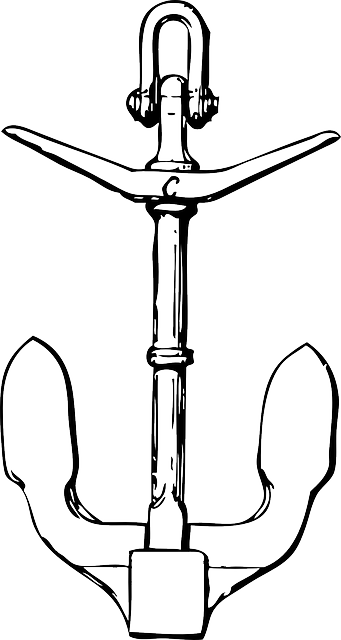Internal linking is crucial for content-rich websites, helping search engines understand site structure and enhancing user experience. Optimize anchor text by using descriptive, contextually relevant keywords that accurately represent target pages, improving search engine visibility and signaling page importance. A balanced strategy that diversifies anchor texts while maintaining natural language flow boosts SEO performance, user engagement, and site architecture. Regularly analyze internal linking data using tools like Google Analytics to refine anchor text optimization, track click-through rates, and align content with user behavior.
“Unleash the power of internal linking to enhance your content-heavy website’s SEO performance! This comprehensive guide is designed for those seeking to master the art of strategic internal links. From understanding the fundamentals to advanced techniques, we’ll navigate you through every step. Learn how to utilize anchor text effectively, optimize link placement, and create a seamless user experience. Discover best practices and metrics to measure success. By implementing these strategies, your site will see improved rankings and engage visitors through a rich content network.”
- Understanding Internal Linking for Content-Heavy Sites
- The Role of Anchor Text in SEO Optimization
- Best Practices for Optimizing Internal Links
- Strategies to Enhance User Experience Through Internal Linking
- Measuring Success: Analyzing Internal Link Performance
- Advanced Techniques for Efficient Internal Link Implementation
Understanding Internal Linking for Content-Heavy Sites

Internal linking is a powerful strategy for content-heavy sites as it helps search engines understand and navigate your site’s structure. When creating links within your pages, the text used to create those links, known as anchor text, plays a crucial role in optimizing for SEO. An optimize anchor text tutorial can guide you on choosing relevant, descriptive keywords that accurately represent the target page’s content.
By using strategic anchor text optimization, you can improve the overall user experience and signal to search engines which pages are most important. This is particularly beneficial for content-rich sites as it ensures that each page contributes to the site’s overall authority and relevance. Remember, an effective optimize anchor text SEO strategy involves balancing diverse anchor texts while keeping them natural and contextually relevant.
The Role of Anchor Text in SEO Optimization

The choice of anchor text is a crucial aspect of SEO internal linking. Anchor text refers to the clickable words or phrases that link one webpage to another on your site. When crafting anchor text, it’s essential to balance relevance and diversity. Using keywords from the target page as anchor text can help search engines understand the context and intent behind the link, thereby improving visibility for both users and algorithms. For instance, if you’re linking to a blog post about “SEO optimization tips,” using that phrase as anchor text signals clearly what the link is about.
An effective strategy for optimize anchor text involves employing various techniques. You can use exact match anchor text when linking directly to relevant content, such as in a list of related articles. However, diversity is key; vary your anchor text to avoid appearing manipulative. Incorporate branded anchor text, generic terms like “learn more,” or even bare URLs for certain internal links. This not only looks natural but also helps search engines index your site more effectively. Remember, the goal of optimize anchor text tips is to create a seamless navigation experience while enhancing your site’s SEO performance.
Best Practices for Optimizing Internal Links

When implementing SEO internal linking on content-heavy sites, adhering to best practices ensures optimal search engine visibility. An essential aspect is using optimize anchor text strategically. Each internal link’s anchor text should be descriptive and contextually relevant, reflecting the target page’s content accurately. Avoid generic keywords; instead, incorporate natural language phrases that users might actually search for. For instance, linking “read more” to a relevant subsection provides both user and search engine clarity.
Additionally, maintaining a optimize anchor text tutorial or optimize anchor text tips balance is crucial. While diverse anchor texts enrich your internal linking structure, overdoing it with excessive variations can raise red flags for search engines. Stick to a few well-chosen strategies that align with your content’s natural flow. A thoughtful optimize anchor text strategy integrates seamlessly with your writing, enhancing user experience while boosting SEO performance on content-rich websites.
Strategies to Enhance User Experience Through Internal Linking

Internal linking isn’t just about improving search engine visibility; it’s a powerful tool to enhance user experience. By strategically placing links within your content, you can guide users to relevant information, fostering a seamless and informative journey through your site. For instance, when writing an in-depth article on a specific topic, link to other related pieces, allowing readers to explore a broader view of the subject matter. This interconnectedness not only keeps visitors engaged but also encourages them to spend more time on your site, lowering bounce rates.
When implementing this optimization technique, focus on crafting meaningful anchor text. Instead of generic “click here,” use descriptive phrases that accurately represent the linked content. For example, “Learn about SEO Best Practices” directs users towards valuable information, enticing them to click. This strategy not only improves UX but also aids search engines in understanding your site’s architecture and content relationships, contributing to better ranking potential.
Measuring Success: Analyzing Internal Link Performance

Measuring success is a crucial step in optimizing your internal linking strategy. By analyzing the performance of your internal links, you can understand which content is resonating with users and search engines alike. Utilize tools like Google Analytics to track click-through rates (CTR) from internal links, which will provide insights into the effectiveness of your anchor text optimization. Pay close attention to pages with high CTRs, as these are likely well-optimized and effectively guiding users through your site.
Regularly reviewing internal link performance allows you to refine your optimize anchor text strategy and tips. Experiment with varying anchor text types, such as branded terms, generic keywords, or even complete sentences, to see what drives the best engagement. This data-driven approach ensures that your SEO efforts are aligned with user behavior, ultimately improving the overall accessibility and information architecture of your content-heavy site.
Advanced Techniques for Efficient Internal Link Implementation

Implementing effective internal linking strategies is an art that goes beyond simply connecting pages. Advanced techniques involve a deep understanding of optimize anchor text and its impact on SEO. When crafting anchor text, diversity is key; avoid generic phrases like “click here” or “this page.” Instead, use specific keywords that accurately describe the linked content, making it more engaging for users and search engines alike. For instance, if linking to a blog post about “SEO best practices,” utilize anchor text like “Unleash SEO Potential: Best Practices for 2023.” This not only provides context but also enhances the overall optimize anchor text optimization.
Additionally, consider the user experience by ensuring internal links are strategically placed within relevant content. Implement a structured navigation system that allows visitors to easily browse through related articles. By integrating these advanced techniques, you can create a seamless and informative user journey while optimizing your site’s optimize anchor text SEO. This holistic approach not only improves search engine visibility but also keeps users engaged, leading to lower bounce rates and higher conversion probabilities.
